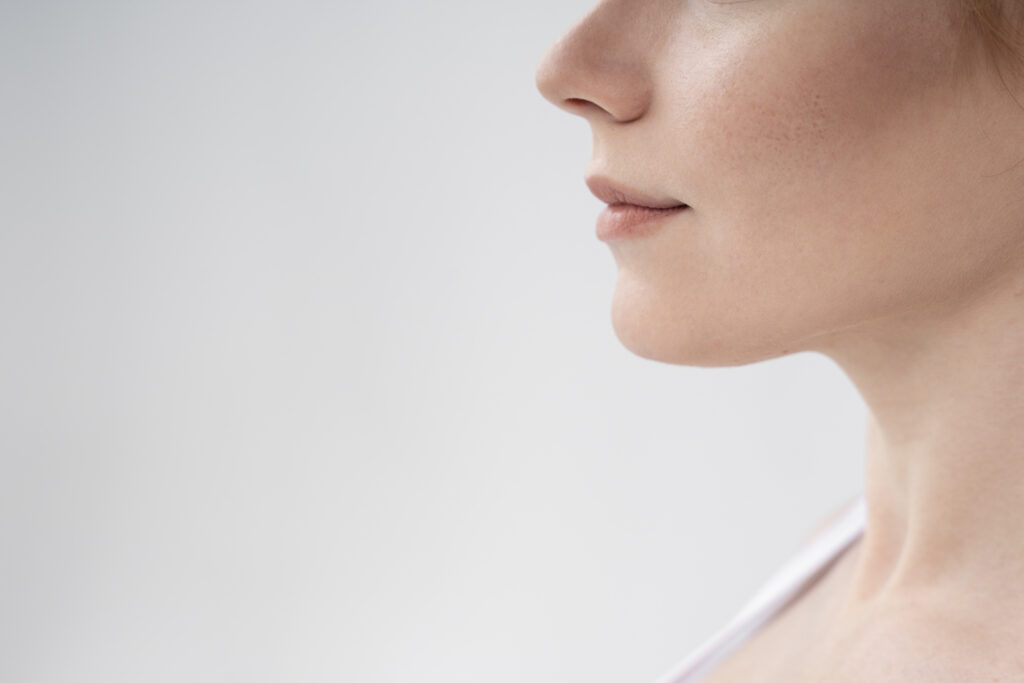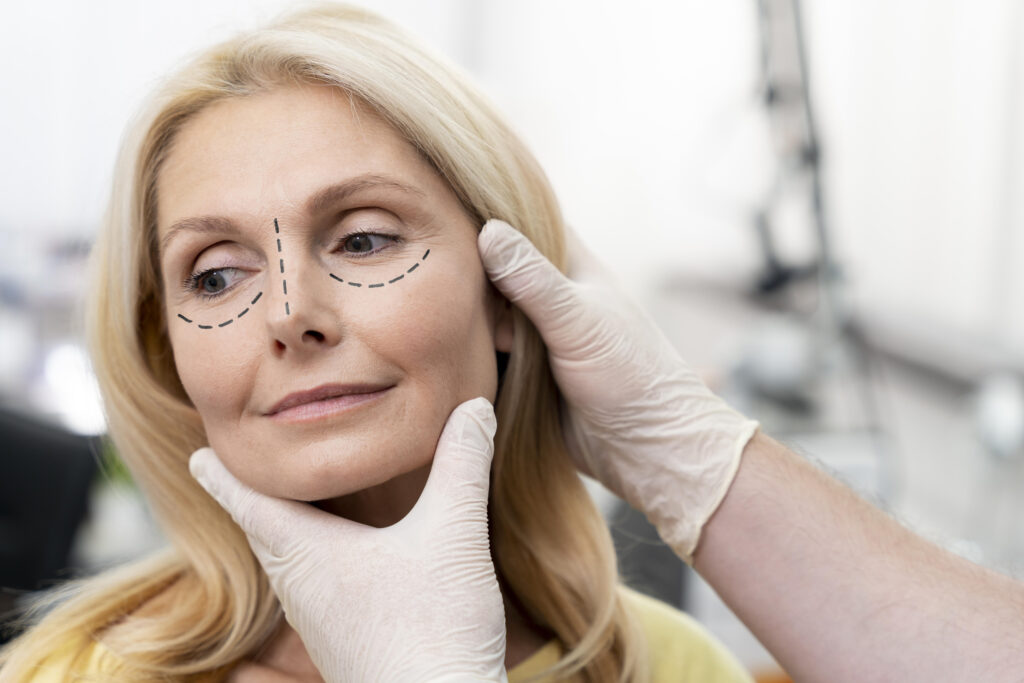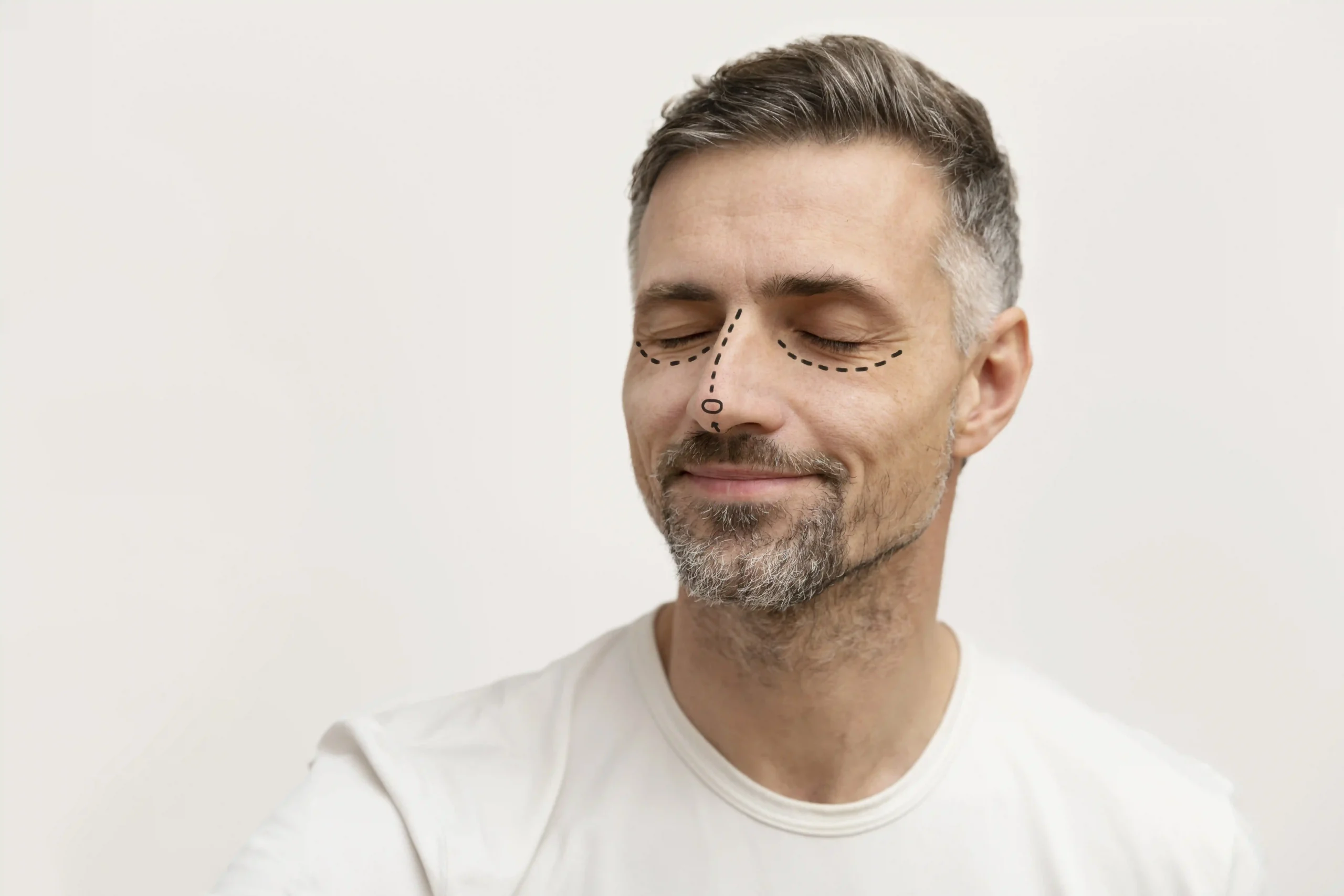Turkish rhinoplasty is everywhere on TikTok right now. Scroll the For You Page and you’ll see fast cut surgery diaries, dramatic reveals, and day-by-day healing clips.
In this guide, one of the best rhinoplasty surgeon in Turkey, Dr. Cem Altindag, breaks down why the platform is obsessed, what’s actually happening in operating rooms, how to vet Istanbul rhinoplasty clinics, and what to know about price, safety, ethics, and aftercare.
You’ll also find a practical checklist and FAQs to help you decide if a Turkey nose job is right for you!
Contents
- 1 Why You See Turkey Rhinoplasty Everywhere on TikTok?
- 2 Why Turkey Nose Job Dominates: The Pull Factors!
- 3 Rhinoplasty Trend Call-Outs You’re Seeing on Your FYP
- 4 Nose Job Results vs. Reality: Before-and-After Clips, Filters, and Timelines
- 5 Safety and Due Diligence: How to Vet Istanbul Rhinoplasty Clinics and Surgeons
- 6 Rhinoplasty Packages Turkey: What’s Included (and What Isn’t)
- 7 Rhinoplasty Ethics and Culture: Eurocentric Pressure vs. Identity-Preserving Approaches
- 8 Practical Vetting Checklist for Best Turkish Thinoplasty Surgeons
- 9 Turkish Rhinoplasty Balanced Perspectives: What Goes Right, What Can Go Wrong
- 10 FAQs
- 11 Planning Roadmap for Medical Tourism Turkey Rhinoplasty
- 12 Final Take
Why You See Turkey Rhinoplasty Everywhere on TikTok?
TikTok boosts content that holds attention, gathers likes/comments, and matches your interests. Surgery journeys hit all three, which is why rhinoplasty Turkey videos spread fast.
TikTok’s own explainer says For You recommendations rank videos on signals like watch time, replays, and interactions. Longer viewing and repeated viewing help a clip travel further, which rewards transformation hooks, Day 1–Day 10 series, and satisfying reveals.
That’s exactly how nose job journey TikTok content wins the algorithm.
Creators lean into before-and-after splits, taping and splint removal, and POV: first time you see your profile shots. Hashtags like Turkish nose job TikTok, TikTok rhinoplasty trend, and rhinoplasty before and after Turkey also help discovery, while day-by-day healing diaries keep viewers coming back for the next installment.
Why Turkey Nose Job Dominates: The Pull Factors!
High procedure volume, English-friendly patient flow, and bundled perks make rhinoplasty Turkey videos very shareable.
- Bundled travel-care packages. Aggregators list typical packages that include hospital fees, anesthesia, 1–2 nights inpatient, meds, follow-ups, translators, and VIP transfers. Hotels and flights vary by package. Published ranges for rhinoplasty cost Turkey often start around $2,800 and run to ~$7,500, with revision rhinoplasty Turkey higher. (Average prices are obtained through Bookimed as required by law. It is advisable to contact the clinics for exact prices.)
- Language access and concierge-style support. Coordinators help with airport pickup, clinic transport, and paperwork, which is easy content for vlogs. People’s feature on a viral Turkey nose job also highlighted the “amenities” angle that performs well on TikTok.
- Clinic accreditation and hospital partnerships. Many facilities operate inside or alongside JCI-accredited hospitals; you can search Turkey’s accredited organizations directly via JCI’s official database. (for research: Joint Commission International)
If you want a deeper dive on why Turkish nose job excels, you can look at our why Turkey for rhinoplasty blog. If you already choose Turkey for rhinoplasty but can’t decide which city to go under the operation, our nose surgery in Istanbul post can give the answer to you!
Rhinoplasty Trend Call-Outs You’re Seeing on Your FYP
Whoville Nose Trend (and the “ski-slope” look)
An exaggerated upturned tip and hyper-scooped bridge is trending in some clips, but surgeons warn about long-term function and aging.
NewBeauty and others caution that extreme tip rotation can narrow airflow and age poorly. The Whoville nose trend may look dramatic in month-one selfies, but it risks structural issues later. Proceed with caution and seek conservative plans.
Preservation Rhinoplasty Turkey
A technique that reshapes while keeping more native structure. Think “reduce from below, preserve lines above.”
Preservation approaches try to keep the dorsal lines and ligaments intact, often using “push-down” or “let-down” maneuvers to smooth a hump from below. Proponents aim for stable, natural results and lower risk of mid-vault collapse. It’s popular in Turkey and widely discussed in current literature.
Ethnic Rhinoplasty Turkey
Refinement that respects identity. The goal is harmony without erasing heritage.
Dr. Eric Cerrati emphasize planning that preserves key ethnic traits while addressing concerns like tip definition, width, or a dorsal hump. This is a major shift from older Eurocentric ideals and a frequent theme in Turkish clinics serving a diverse international patient base.
Nose Job Results vs. Reality: Before-and-After Clips, Filters, and Timelines

Filters and angles can mislead. Swelling is real. Final results take months.
- Filters and camera tricks. Filters can slim bridges, sharpen tips, and even alter nostril shape, which creates unrealistic expectations. Studies link beauty filters and social media exposure with increased interest in cosmetic procedures and body dissatisfaction.
- Taping and splints. On TikTok, the taping/splint removal moment looks like “the reveal,” but it’s still early. Medical sources note that visible refinements continue for many months as swelling resolves.
- How long until final results? You’ll see meaningful changes by 6–12 weeks, but the tip and fine definition keep settling for up to a year. That’s normal.
Safety and Due Diligence: How to Vet Istanbul Rhinoplasty Clinics and Surgeons
Verify credentials, facility standards, and aftercare. Don’t rely on viral clips.
- Check accreditation and membership. Use JCI’s official tool for hospitals. For surgeon credentials in Türkiye, look for membership in the Turkish Society of Plastic, Reconstructive and Aesthetic Surgeons (TSPRAS), Turkish board certification, and optionally EBOPRAS or ISAPS membership. TSPRAS outlines training and has a public checklist.
- Know revision realities. Published literature places revision rates around 5–15% for rhinoplasty overall. That’s not a “Turkey number”; it’s a general benchmark worth understanding before any surgery.
- Plan aftercare before you book flights. The NHS warns that combining major surgery and air travel increases blood clot risk. They advise waiting 7–10 days after facial cosmetic procedures before flying and planning adequate time in-country for early follow-ups.
- Understand who treats complications back home. If you live in the UK, the NHS notes that the original surgeon is responsible for aftercare, but access from abroad can be limited. Be clear on remote support and what happens if you need urgent care once you return.
Rhinoplasty Packages Turkey: What’s Included (and What Isn’t)
Rhinoplasty packages in Turkey often bundle surgery with hospital fees, anesthesia, medicines, transfers, translators, and sometimes hotel nights. Flights are usually separate. Revisions are almost never included.
| Package item | Commonly included | Often included | Not typically included |
| Surgery, anesthesia, surgeon fees | ✓ | ||
| Hospital stay (1–2 nights) | ✓ | ||
| Post-op meds while in Turkey | ✓ | ||
| Follow-up checks (early) | ✓ | ||
| Interpreter/translator | ✓ | ||
| Airport/clinic transfers (VIP) | ✓ | ||
| Hotel nights | ✓ (varies) | ||
| Flights | ✓ | ||
| Extra tests for unrelated findings | ✓ | ||
| Complications after you fly home | ✓ | ||
| Revision rhinoplasty | ✓ |
Prices and inclusions vary by clinic and complexity. Always request a line-item quote in writing and ask how complications are managed if they occur after you return.
Rhinoplasty Ethics and Culture: Eurocentric Pressure vs. Identity-Preserving Approaches
TikTok trends can push a narrow ideal, but many patients and surgeons prefer identity-preserving changes.
Beauty filters and viral “template noses” can tilt expectations toward a single aesthetic. At the same time, ethnic rhinoplasty Turkey and preservation rhinoplasty Turkey reflect a broader move toward subtle, culturally sensitive outcomes. Align your plan with your values, not a meme.
Practical Vetting Checklist for Best Turkish Thinoplasty Surgeons
- Verify surgeon training. Ask for Turkish board certification and TSPRAS membership; check directories. EBOPRAS/ISAPS membership is a plus. Get the surgeon’s full name and registration.
- Confirm hospital standards. Search the hospital in JCI’s database. If not JCI, ask about local accreditation and emergency coverage.
- See unedited portfolios. Request same-lighting, same-angle photos at 1, 3, 6, 12 months. Ask for cases similar to your skin thickness and anatomy.
- Discuss approach. Open vs closed, structural vs preservation, graft sources, and how choices affect swelling and stability. Bring specific goals and “no-go” lines.
- Ask about revision policy. Clarify fees and waiting periods. Understand typical revision rates and timelines.
- Lock down aftercare. Who removes splints/tapes if you’ve already flown home? Is there a UK/EU partner? What is the escalation plan? NHS guidance on travel timing applies.
- Get a detailed quote. Itemize inclusions, exclusions, medications after discharge, and what happens if you need extra nights or tests.
- Plan flights wisely. Book flexible tickets and allow buffer days before and after surgery to reduce DVT risk and for fit-to-fly clearance.
If you want to learn more about how to choose the best rhinoplasty surgeon in Turkey, you can read our finding the best rhinoplasty surgeons in Turkey post.
Turkish Rhinoplasty Balanced Perspectives: What Goes Right, What Can Go Wrong

Many patients share smooth experiences with clear care pathways and concierge support; others report complications, unrealistic expectations from filters, or difficulty accessing aftercare at home.
People’s coverage of a TikTok-viral Turkey nose job shows the appeal of bundled amenities and fast content arcs. On the other hand, professional groups and news outlets have flagged rising complications from cosmetic travel more broadly, especially when patients chase the lowest price. Do your homework.
FAQs
How much does rhinoplasty cost Turkey?
Package listings commonly range from ~$2,800 to ~$7,500 depending on surgeon, technique, and case complexity. Revision rhinoplasty Turkey usually costs more. Always review what is and isn’t included.
How long is healing?
Most people feel presentable after 2–3 weeks. Swelling, especially at the tip, refines for months. Expect final definition at around 12 months.
Does it hurt?
Discomfort is typical for the first few days and improves quickly. Congestion and pressure often bother people more than pain. Your surgeon will outline pain control.
When can I fly after surgery?
UK guidance recommends 7–10 days after facial cosmetic procedures before flying to lower clot risk. Plan extra time in Istanbul for follow-ups before you go home.
Open vs closed rhinoplasty: how do I choose?
Open offers maximal visibility for complex shaping and revisions. Closed avoids a small external incision and may have slightly less early swelling. Evidence suggests outcomes are comparable; choose based on your anatomy and your surgeon’s expertise.
What is preservation rhinoplasty Turkey in one sentence?
A technique that keeps more of your natural dorsum and ligaments while smoothing or lowering from below for a stable, “non-operated” look.
Can I keep my ethnic features?
Yes. Ethnic rhinoplasty Turkey focuses on harmony without erasing identity. Bring reference photos that reflect your goals and heritage.
Are revisions common?
Across studies, revisions happen in roughly 5–15% of cases. Choose a surgeon who talks openly about revision policy and timelines.
Planning Roadmap for Medical Tourism Turkey Rhinoplasty
- Shortlist 3–5 surgeons based on training, portfolios, and case volume relevant to your anatomy.
- Video consults. Share unfiltered photos and medical history. Ask specifically about structural vs preservation techniques.
- Compare written quotes for rhinoplasty packages Turkey side by side.
- Book dates with safety in mind. Build 10–14 days in Istanbul if possible for early checks and to avoid rushing flights.
- Sort logistics. Hotel near the clinic, someone to accompany you for the first 48 hours, translation if needed, and clear aftercare contacts back home.
- Pre-hab. Don’t smoke or vape, optimize sleep and hydration, and follow any med adjustments your surgeon orders.
- Post-op plan. Arrange saline rinses, gentle walks, and realistic time off. Avoid heavy exercise until cleared.
Final Take
TikTok makes Turkish rhinoplasty look easy, but the best outcomes come from careful vetting, conservative plans, and patience with swelling. Respect your identity, guard against filter-driven expectations, and choose surgeons who can explain exactly how they’ll protect function while shaping form. If you do that, your “after” will still look like you, just more you!


